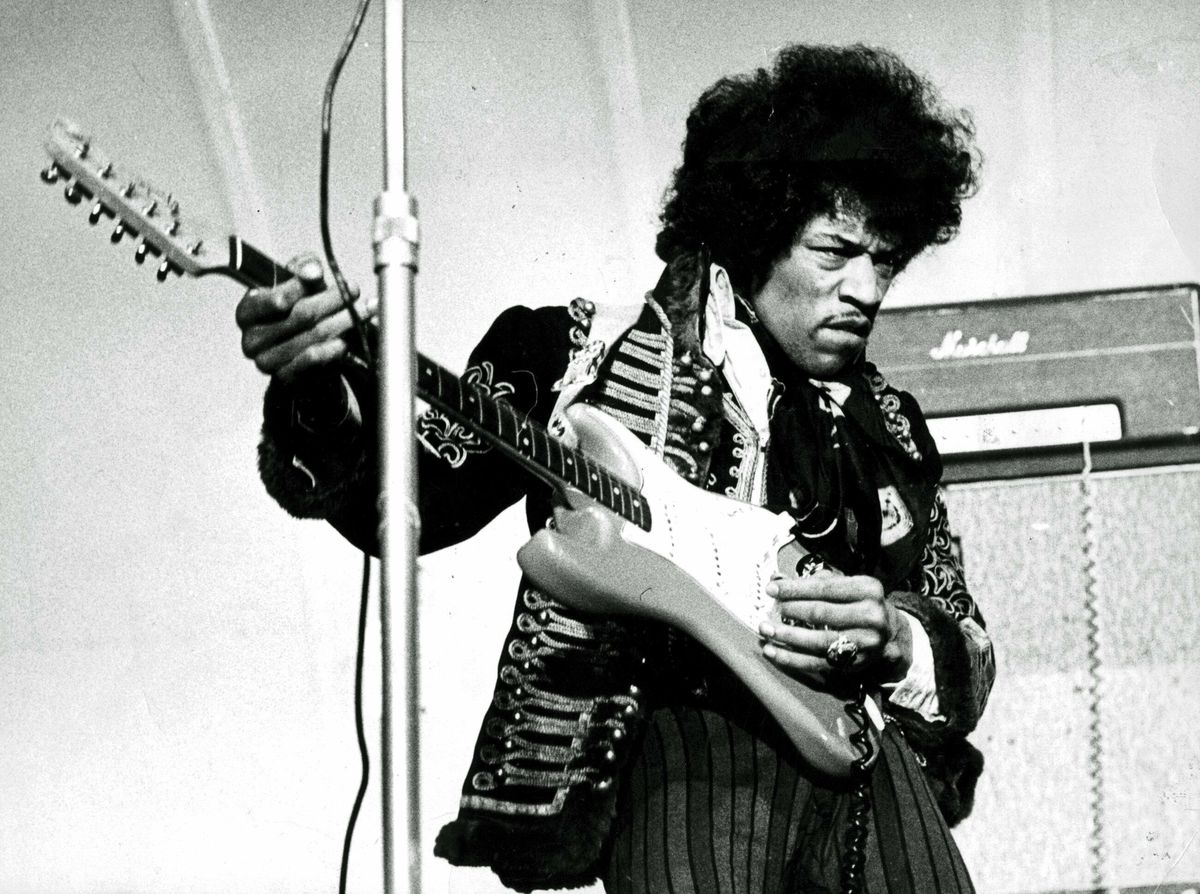Home>Genres>Rock>The Country Music Establishment Disowned Artists Who Sang Rock N Roll


Rock
The Country Music Establishment Disowned Artists Who Sang Rock N Roll
Modified: March 11, 2024
Discover how the country music establishment turned their back on artists who dared to sing rock 'n' roll, challenging the genre's traditional boundaries. Explore the hidden history of rock in country music.
(Many of the links in this article redirect to a specific reviewed product. Your purchase of these products through affiliate links helps to generate commission for AudioLover.com, at no extra cost. Learn more)
Table of Contents
Introduction
Country music and rock ‘n’ roll are two iconic genres that have shaped the musical landscape for decades. While both may seem distinct from each other, they share deep roots in American music history. However, there was a time when the country music establishment disowned artists who dared to venture into the realm of rock ‘n’ roll.
Country music, with its origins in the folk traditions of the rural South, has long been associated with themes of heartbreak, storytelling, and the struggles of everyday life. On the other hand, rock ‘n’ roll emerged in the 1950s as a rebellious and energetic genre that celebrated youth culture and pushed the boundaries of musical conventions. It was characterized by its rhythmic drive, electric instrumentation, and raw energy.
As rock ‘n’ roll gained mainstream popularity, it posed a challenge to the traditional sound and image of country music. This clash between the two genres created a divide within the music industry and led to the disassociation of artists who attempted to blend elements of both styles.
In this article, we will delve into the origins of country music and rock ‘n’ roll, explore the clash between these genres, and examine the consequences faced by artists who dared to bridge the divide. We will also discuss how this disassociation has shaped the changing landscape of country music and influenced the evolution of both genres.
Join us as we uncover the fascinating history of the disownment of artists who sang rock ‘n’ roll within the country music establishment.
The Origins of Country Music
Country music traces its roots back to the early 20th century. It evolved from a blend of folk music, blues, gospel, and Appalachian traditions, creating a distinct sound that reflected the experiences and struggles of rural working-class Americans.
The earliest forms of country music can be found in the songs and ballads brought to America by European immigrants. These songs were passed down through generations and began to take on a uniquely American flavor, incorporating elements of African-American blues and spirituals.
During the early 1920s, the recording industry began to take notice of the rising popularity of country music. Artists like Jimmie Rodgers and the Carter Family emerged as the pioneers of the genre, capturing the hearts of listeners with their heartfelt lyrics and homespun melodies.
The sound of country music was often characterized by acoustic instruments, such as the guitar, banjo, fiddle, and mandolin. The lyrics revolved around themes of love, loss, family, and the everyday struggles of rural life. It provided a voice for the working class and served as a source of comfort and solace during difficult times.
Country music gained widespread popularity through radio broadcasts, live performances, and the emergence of record labels dedicated to promoting the genre. It became deeply ingrained in American culture, reflecting the values and experiences of a vast segment of the population.
As the popularity of country music grew, so did its influence on other genres. It laid the foundation for the development of rockabilly, a fusion of country and rock ‘n’ roll that emerged in the 1950s and became an important precursor to the rock music that would dominate the decades to come.
The origins of country music provide a rich and diverse tapestry of cultural influences and musical traditions that continue to shape the genre to this day. It serves as a reminder of the power of music to connect people, transcend boundaries, and tell the stories of everyday life.
The Rise of Rock ‘n’ Roll
In the 1950s, rock ‘n’ roll burst onto the music scene and forever changed the landscape of popular music. A fusion of various musical styles, including rhythm and blues, gospel, country, and jazz, rock ‘n’ roll brought a new energy and excitement that captivated the youth of America.
The rise of rock ‘n’ roll can be attributed to several key factors. The first was the influence of African-American musicians who pioneered rhythm and blues. Artists like Chuck Berry, Little Richard, and Fats Domino brought a fresh and electrifying sound to the airwaves, blending the raw energy of blues with catchy melodies and infectious rhythms.
At the same time, there was a cultural shift happening in America. The post-war era saw a rise in youth culture, and teenagers were looking for music that reflected their rebellious spirit and desire for freedom. Rock ‘n’ roll emerged as the perfect soundtrack for this generation, with its upbeat tempo, rebellious lyrics, and catchy hooks.
The advent of television also played a crucial role in the rise of rock ‘n’ roll. Performers like Elvis Presley made appearances on popular shows like “The Ed Sullivan Show,” exposing their music to a wide audience and solidifying their status as idols of the young generation.
Rock ‘n’ roll not only changed the sound of popular music, but it also challenged societal norms and sparked controversy. The genre was associated with rebellion, dancing, and even sexuality, which caused concern among more conservative elements of society. However, this controversy only fueled the popularity of rock ‘n’ roll, making it even more enticing for young audiences.
The rise of rock ‘n’ roll also brought about changes in the music industry itself. Record labels and radio stations began focusing more on promoting this new sound, recognizing its commercial potential and appeal to a lucrative youth market.
By the end of the 1950s, rock ‘n’ roll had become a dominant force in popular music, shaping the sounds and attitudes of generations to come. Its influence would extend far beyond the musical realm, impacting fashion, culture, and even politics.
The rise of rock ‘n’ roll marked a significant turning point in music history, challenging conventions and bringing about a cultural revolution that would forever leave its mark on the world.
The Clash Between Country and Rock ‘n’ Roll
The emergence of rock ‘n’ roll in the 1950s created a clash with the established country music industry. The two genres represented different musical traditions, sensibilities, and fan bases, leading to a divide that would have lasting effects.
At the core of this clash was the perception of rock ‘n’ roll as a rebellious and boundary-pushing genre. Its association with youth culture, its energetic and electric sound, and its lyrics that didn’t shy away from controversial topics challenged the more conservative image of country music.
The country music establishment viewed rock ‘n’ roll as a threat to their genre’s authenticity and values. They feared that the rising popularity of rock ‘n’ roll would dilute the traditional sound and image of country music, leading to a loss of identity and fan base.
Many country music artists struggled with the decision of whether to embrace or reject rock ‘n’ roll. Some saw the appeal of the new genre and tried to incorporate elements of rock ‘n’ roll into their music. However, doing so often led to backlash from their existing fan base and criticism from the country music establishment.
One of the challenges in blending the two genres was the difference in musical styles and instrumentation. Rock ‘n’ roll relied heavily on electric guitars, drums, and a rhythmic drive, while country music favored acoustic instruments and a more laid-back sound. Attempting to bridge this gap proved difficult for many artists.
The clash between country and rock ‘n’ roll was not just limited to the music itself but extended to the cultural and social implications of the genres. Country music was often associated with traditional values, rural life, and hard work, while rock ‘n’ roll represented a new era of youth rebellion, cultural change, and challenging societal norms. These contrasting images further fueled the divide between the two genres.
Ultimately, the clash between country and rock ‘n’ roll highlighted the tension between tradition and innovation in the music industry. It forced artists to make difficult choices about their musical direction and challenged the boundaries of what was considered acceptable in popular music.
Despite the initial resistance and clash, the influence of rock ‘n’ roll on country music could not be ignored. It paved the way for the development of sub-genres like rockabilly, which blended elements of both styles and contributed to the evolution of country music.
The clash between country and rock ‘n’ roll created a defining moment in music history, shaping the future of both genres and leaving a lasting impact on the music industry as a whole.
The Disassociation of Artists by the Country Music Establishment
The clash between rock ‘n’ roll and country music led to a disassociation of artists who attempted to bridge the gap between the two genres. The country music establishment, consisting of record labels, radio stations, and influential figures, often disapproved of artists venturing into the realm of rock ‘n’ roll.
Artists who dared to incorporate elements of rock ‘n’ roll into their country music faced backlash and criticism from both fans and industry insiders. The country music establishment feared that this fusion would dilute the authenticity of country music and alienate their traditional fan base.
As a result, many artists who experimented with rock ‘n’ roll were met with resistance and disapproval. They were often labeled as sellouts or accused of betraying their country music roots. The disassociation from the country music establishment had significant consequences for these artists, both personally and professionally.
One notable example is Johnny Cash, who, in the early 1960s, incorporated elements of rockabilly and rock ‘n’ roll into his country sound. This experimentation was met with skepticism and criticism from the country music establishment. Cash, however, stayed true to his vision and persevered, eventually becoming one of the most iconic and influential figures in both country and rock music.
Another artist who experienced the disassociation from the country music establishment was Elvis Presley. While he was initially embraced by the genre for his early rockabilly sound, his later transition into a more mainstream rock ‘n’ roll style led to a distancing by the country music establishment. Despite this, Presley’s impact on both genres cannot be overstated, and he remains a cultural icon to this day.
The disassociation of artists who embraced rock ‘n’ roll within the country genre had far-reaching consequences. Many saw a decline in record sales, radio airplay, and opportunities for promotion within the country music industry. Some were dropped by their record labels or saw their music pushed to the sidelines in favor of more traditional country artists.
This disassociation also affected the live performance aspect of these artists’ careers. They often found it challenging to book shows and tour within the country music circuit, as promoters and venues were hesitant to associate themselves with artists who were seen as straying from the genre’s foundations.
Despite the hurdles faced by these artists, their contributions to both country and rock ‘n’ roll cannot be overlooked. They pushed boundaries, challenged conventional norms, and paved the way for future generations of musicians who would effortlessly blend genres and defy categorization.
The disassociation of artists who embraced rock ‘n’ roll within the country music establishment serves as a reminder of the power of artistic expression and the risks taken by those who dare to defy expectations and carve their own musical path.
Consequences for Artists Who Sang Rock ‘n’ Roll
For artists who dared to embrace rock ‘n’ roll within the country music genre, there were significant consequences. Their decision to blend these genres often led to backlash and various challenges, both personally and professionally.
One of the immediate consequences for these artists was a decline in support from the country music establishment. They faced disapproval and criticism from industry insiders, record labels, and even their loyal fans. This disassociation resulted in a loss of promotional opportunities, limited radio airplay, and a decline in record sales.
The disapproval from the country music establishment also affected the public perception of these artists. They were often seen as traitors or sellouts to their country music roots, causing a rupture within their fan base. This perception had a direct impact on their fan loyalty and marketability within the country music industry.
Furthermore, the disconnection from the country music establishment led to difficulties in booking live performances and securing tour opportunities. Promoters and venues were often hesitant to associate themselves with artists who had embraced rock ‘n’ roll, fearing that it would alienate the traditional country music audience.
Financially, these artists often experienced a decline in income due to the decreased popularity within the country music scene. They were no longer able to command the same level of record sales, merchandise sales, or concert ticket sales as they had before. This had a significant impact on their overall livelihood and financial stability.
Despite the challenges and consequences, some artists who sang rock ‘n’ roll within the country music genre decided to stay true to their artistic vision. They persevered through the backlash, carving their own path in the music industry. These artists, such as Johnny Cash and Elvis Presley, eventually found success by tapping into a broader market and appealing to a more diverse audience.
The consequences for artists who sang rock ‘n’ roll within the country music genre were not limited to their careers. On a personal level, they often faced internal struggles and the pressure to conform to industry expectations. The criticism and rejection they experienced could take a toll on their mental well-being and sense of self-identity.
However, it is important to note that the decision to embrace rock ‘n’ roll within the country music genre also brought its own rewards. These artists played a significant role in shaping the evolution of both genres and breaking down musical barriers. Their influence can still be felt in the country and rock music landscape today.
In the face of disapproval, these artists demonstrated courage, resilience, and a steadfast dedication to their artistic vision. They defied expectations, challenged the status quo, and left a lasting legacy that continues to inspire musicians and music lovers alike.
The Changing Landscape of Country Music
The clash between country music and rock ‘n’ roll had a lasting impact on the genre, leading to a transformation of the country music landscape. The disassociation of artists who embraced rock ‘n’ roll created a shift in the perception of country music and influenced its evolution in the following decades.
One of the notable changes in the country music landscape was the broadening of its sound and the incorporation of elements from other genres. The influence of rock ‘n’ roll led to the emergence of sub-genres like country rock, which blended the rootsy sound of country with the energy and instrumentation of rock music.
Country artists began exploring new musical territory, experimenting with electric guitars, drums, and other instruments traditionally associated with rock ‘n’ roll. This marked a departure from the acoustic, twangy sound that had dominated the genre for so long.
In addition to the changes in sound, the lyrics and themes in country music also underwent a shift. Artists began addressing a wider range of topics, including social issues, personal experiences, and emotional vulnerability. This departure from traditional storytelling and themes of rural life opened up new avenues for creativity and connection with listeners.
The changing landscape of country music also allowed for more diverse voices to be heard within the genre. Artists with different backgrounds, including women, minorities, and artists from outside of the traditional country music hubs, began making their mark on the industry. This increased diversity led to a more inclusive and dynamic country music scene.
Furthermore, the commercial success of artists who had embraced rock ‘n’ roll within the country genre challenged the notion that a strict adherence to tradition was necessary for popularity and success. The crossover success of artists like Shania Twain, Garth Brooks, and Taylor Swift demonstrated that blending genres and pushing boundaries could yield immense commercial success and broaden the audience base for country music.
The changing landscape of country music was also influenced by advancements in technology and the rise of digital music platforms. The internet allowed for greater accessibility and exposure, enabling artists to reach audiences outside of traditional broadcast channels. This shift democratized the industry and provided more opportunities for independent artists to thrive.
Today, country music continues to evolve, embracing a wide range of influences and styles. The genre has become more inclusive and progressive, accommodating various sub-genres and experimentation. Artists now have the freedom to blend country with elements of pop, rock, folk, and even hip-hop, embracing a more fluid definition of what country music can be.
The changing landscape of country music reflects the power of artistic expression and the ability of a genre to adapt and grow over time. It demonstrates that innovation and evolution are essential for the continued relevance and longevity of any musical genre.
Conclusion
The clash between country music and rock ‘n’ roll, and the subsequent disassociation of artists who dared to bridge the gap, has had a profound impact on the history and evolution of both genres. The country music establishment was wary of the influence of rock ‘n’ roll, fearing that it would dilute the authenticity and traditional sound of country music.
Despite the challenges faced by artists who embraced rock ‘n’ roll within the country genre, their contributions cannot be overlooked. They pushed boundaries, challenged conventions, and paved the way for a more diverse and innovative country music landscape. Artists like Johnny Cash, Elvis Presley, and many others demonstrated courage in staying true to their artistic vision, even in the face of criticism and disapproval.
The clash between country and rock ‘n’ roll also sparked a transformation of the country music genre. It led to the incorporation of new sounds, the broadening of lyrical themes, and a more inclusive and diverse representation within the industry.
The changing landscape of country music reflects the dynamic nature of the music industry as a whole. It reminds us that musical genres are not fixed entities but rather living, breathing entities that evolve and adapt over time.
Today, country music continues to thrive, embracing a wide range of influences and styles. The fusion of genres, the experimentation with different sounds and themes, and the embrace of technological advancements have opened up new possibilities for artists and listeners alike.
The clash between country music and rock ‘n’ roll may have created divisions and challenges, but it also ignited a spirit of creativity and exploration. It showed that music has the power to transcend boundaries and connect with audiences on a deep emotional level.
As we look back at the disassociation of artists who sang rock ‘n’ roll within the country music establishment, we can appreciate their role in shaping the history of both genres. Their influence and artistic vision continue to resonate, reminding us of the enduring power of music to challenge, inspire, and unite.











